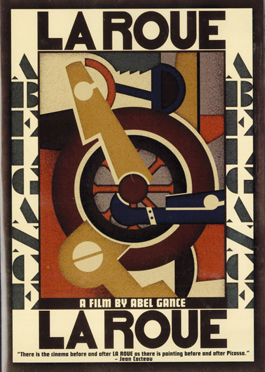home | metro silicon valley index | movies | current reviews | dvd review

La Roue
Two discs; Flicker Alley; $39.95
By Michael S. Gant
French director Abel Gance's reputation in America hinges almost entirely upon his delirious historical epic Napoléon (1927). Now, thanks to Flicker Alley (and Blackhawk Films, Lobster Film Studios and Film Preservation Associates), we can see another Gance masterpiece in something close to its original form for the first time in more than 80 years. La Roue (1923), first screened in a seven-plus-hour version over several nights, contained enough special effects and editing marvels to inspire generations of moviemakers in France, Russia and even Japan, according to William M. Drew's essay that comes with this two-disc set. English audiences, however, never got to see anything but severely truncated versions. Working from a variety of prints, Eric Lange and David Shepard have assembled a 270-minute version, beautifully tinted and for the most part exceptionally clear and sharp. La Roue (Gance also wrote the script) focuses on the travails of Sisif (Séverin-Mars), a railroad engineer in the south of France. After a terrible accident, Sisif rescues a baby girl and raises her as his own. Sisif's own son, Elie, grows up thinking that he and Norma are brother and sister. Both father and son share a veiled incestuous urge for the winsome, playful Norma (British actress Ivy Close, who gambols and cavorts way too much). Eventually, the truth comes out; Norma marries a rich, villainous railroad executive; and Sisif and Elie endure much tortured self-reflection. After being blinded by a blast of steam, Sisif moves to a remote mountain redoubt with Elie; when Norma and her husband find them again, the climax turns into a literal cliffhanger, followed by a too-lengthy denouement. The plot traffics in pure corn; the acting (especially Gabriel de Gravone's simpy, lovestruck Elie) often looks as dated as dinner-theater melodrama; and there is way too much comic relief. But visually, La Roue never disappoints. Gance and cinematographer Léonce-Henry Burel went on location to Nice, filming alongside the railroad tracks (and even underneath in a few thrilling shots) and on board the racing trains. The scenes of the engines pumping out vast billows of smoke and the flashing rails racing toward the horizon benefit from unalterable realism. In one of the best moments, Sisif, his thoughts roiled with guilt and desire, runs ahead of a pursuing locomotive at night, trapped in the pitiless glare of the headlight. Throughout, Gance uses a wide variety of vignetting techniques to concentrate our attention on the characters; more than once, the actors are isolated in tiny circles of light in the midst of a black screen, as though viewed through a microscope. Gance works his title metaphor hard: the wheel is the wheel of the locomotive and the endless round of suffering that is human life. In the moments of greatest physical and psychological stress, the rapid-fire, staccato editing reaches the point of cutting in images frame by frame. But Gance also knew how to slow down-the last scene of the first half circles slowly around the distraught Sisif as he stands in the center of the railroad roundhouse and pivots to look at the locomotive bays. It is his farewell to a world he can never see again. La Roue is accompanied by an excellent rousing score by Robert Israel; extras include an illustrated booklet and an on-the-scenes minidocumentary about the making of the film. I don't know if I could recommend La Roue to a casual moviegoer, but this set is a treasure of inestimable value for anyone who has been seduced by the siren call of that fabled lost art form: the silent film.
Send a letter to the editor about this story.
|
|
|
|
|
|